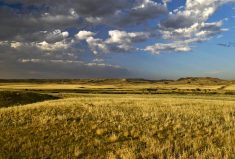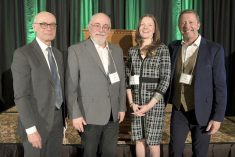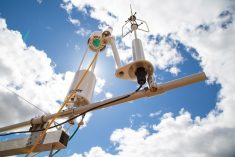Tempers flared and fingers pointed as 350 residents from communities surrounding the three Shoal Lakes in the Interlake gathered in Woodlands last week.
They were there to hear the long-awaited results of a study into possible solutions for an unfolding natural disaster – the seemingly unstoppable rise in lake levels that is submerging land that has supported area ranchers for generations.
People are understandably angry and frustrated. This situation affects far more than the 117 landowners directly affected along the shores of these three lakes between Lake Winnipeg and Lake Manitoba.
Read Also

Canada’s Grocery Code of Conduct just window dressing
The voluntary nature of Canada’s Grocery Code of Conduct robs it of effectiveness and won’t result in the food system accountability that’s needed.
The closing of major thoroughfares through the region due to flooding cuts into commerce and school bus routes. It’s splitting up families, who must place their kids in town during the school week.
And as ranchers lose their land, they lose their equity. The municipalities lose their tax base. If people leave the region altogether, the whole rural economy suffers because it is likely they will resettle in an urban area.
The pressure brings out the worst in people.
Cottage owners along the shores of Lake Manitoba and the lake’s commercial fisherpeople made it quite clear last week they don’t want the Shoal Lakes basin drained in their direction.
Non-cottage owners were ready with potshots at the so-called “rich city cottage crowd” – an odd reaction to people who are investing their life savings into your local economy.
But it was the civil servants and elected officials, both those in the room and those who were not, who bore the brunt of people’s anger.
The message loud and clear was, “We are suffering; we are losing our livelihoods. It’s up to the government to come up with a solution, either drainage or compensation or both.”
While it is reasonable for citizens suffering the effects of a natural disaster to look to government for assistance, it is also important to recognize the root of this disaster is no one’s fault.
There has undoubtedly been some degree of drainage into the area, exacerbating the problem, but this basin – like others in the province – has seen unprecedented precipitation in recent years and there is no natural outlet for the buildup of water. A similar scenario is unfolding in the area around Devils Lake in North Dakota.
Recent research has shown the Red River has had double the annual flows in the past 15 years than it had in the previous three to four decades. Hardly a spring has passed since the late 1990s when significant flooding wasn’t a risk or reality.
Vast sections of the Canadian Prairies, more noted for drought than drowning, were left unseeded this past spring due to excess moisture.
If the experts monitoring our climate are correct, we will start to see, and perhaps we already are experiencing, profound changes in the environment in which we live and work.
The people who will be on the front lines of those changes are those whose lives are intertwined with the natural environment, and that includes our farmers and rural communities.
One left the meeting in Woodlands last week with a sense that this is just a taste of the kinds of divisive pressure climate change will create on our rural communities and society at large.
We are accustomed to looking to our governments for both prevention and mitigation from losses. But there is a real potential that governments will run out of capacity in the face of rising demands. That has to be part of the analysis that goes into what, if any, action is taken to address the plight of these ranchers and their community.
To what extent are they setting precedent or expectations that they won’t be able to fulfil in the future?
We sympathize with these ranchers. They have survived a series of man-made disasters in recent years ranging from BSE to currency fluctuations, high feed prices and trade disruptions. Those pale in comparison to the threat they now face.
And we would suggest the land-classification system that identifies these lands as having low productive capacity is based on outdated parameters. It may not be suitable for crop production, but these ranchers have proven for generations that it can carry agricultural production under low-input sustainable management – a model that is gaining stature as the world’s resources run short.
Besides, as more of our most productive lands in this province continue to fall under subdivisions, we wonder whether the province can afford to lose these acres.
We don’t know the right answer for the Shoal Lakes issue. But we do believe it falls to various levels of government to do a reasonable amount of study and make a decision – even if it is politically unpopular. Only then can local residents choose their own path forward.
Governments don’t owe any of us a living, but they do owe us that – a decision. [email protected]



















